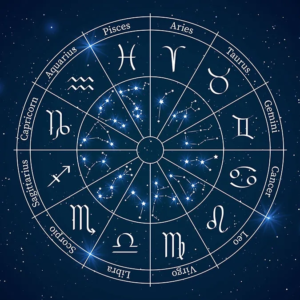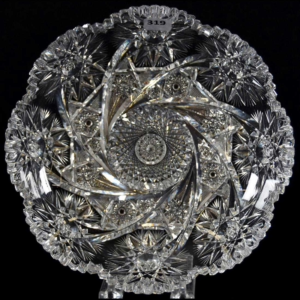Diaspore Stone – properties, virtues & benefits
Diaspore stone, also known as zultanite, is a gemstone with unique properties in lithotherapy. This semi-precious stone is known for its healing properties and its ability to help with emotional and mental balance. In this article, we’ll look at the history of diaspore, as well as its characteristics, origin and composition, and its virtues and properties in lithotherapy.
DIASPORE CHARACTERISTICS
- Chakra: Third eye.
- Properties: Color change, emotional well-being, balance.
- Astrology: Venus.
- Zodiac: Gemini, Libra.
- Elements: Air, Water.
- Colors: Light green, pale Pink, champagne.
- Hardness: 6.5-7 (Mohs scale).
- Chemical Formula: AlO(OH).
- Associated god: None.
DIASPORE – HIS STORY
There’s a rare mineral with a unique ability to change color depending on lighting conditions, making it a highly sought-after premium gem. This multifaceted stone was discovered over two centuries ago and first named Diaspore by Frenchman René Just Haüy in 1801. The British call it Diasporite. The mineralogical term comes from the Greek word “Diaspora”, meaning dispersion, in reference to the disintegration of stone when heated. Traces of this mineral have been found in the Urals under the name Glandular Kyanite.
Turkey is the only country to commercially mine this rare mineral, whose specimens of the highest quality, size and weight are designated Zultanite. As a tribute to history and to honor the 36 sultans of the Ottoman EmPire, the name has stuck and the trademark was registered in 2008. This precious stone was already known to the ancient oriental sages and much appreciated by the sultans, who used it in jewelry and in their ceremonial outfits.
.
The only source of Zultanite is in Turkey, in the mountains of Anatolia, at an altitude of over 1,200 meters above sea level. This region is also known as “the land where the sun rises”, offering splendid scenery in the Asian part of Turkey.
Zultanite has become very popular on the international gemstone market, restoring its value to Diaspore, which was previously less valued due to its inferior quality and difficulty in being worked. Indeed, the unique change in color according to the light is made possible by a complex cutting process carried out by experienced laPidaries. They must find the best cutting angles to maximize color and minimize material loss, as the material is very fragile. As a result, large, heavy specimens are rare. The meaning of the word Diaspore is therefore closely linked to the notion of dissipation.
DIASPORE STONE – ITS ORIGIN AND COMPOSITION
This mineral is one of the main constituents of bauxites and is therefore an important aluminum ore, alongside boehmite and gibbsite. It is found in crystalline and clayey limestones. Its composition is intermediate between corundum (which includes rubies and sapphires) and bauxite. In crystallochemistry, it is the leader of a class of isostructural minerals formed from oxyhydroxylated metals and having an orthorhombic crystal system.
Although it is generally massive, in flaky or scaly form, a few rare crystals can take the form of prisms with striated faces, or even as stalactites. Diaspore stone is a perfectly natural gem, untreated and unimproved since it was first extracted. It is translucent to transparent and is known as a chameleon stone, whose color changes according to the light.
Under natural light, the stone may appear pale green or yellow, while subdued or incandescent light will reveal beautiful warm colors ranging from orange to Pink, or even almost red depending on the presence of manganese. This phenomenon is particularly spectacular on large specimens, where all color combinations become observable with remarkable intensity.
The mineral’s hardness and crystallographic properties make it a highly prized gem in jewelry. The gem is often cut in the traditional way, in rectangular or oval cuts. Cabochon-cut stones have a spectacular effect known as “cat’s eye”.
The largest and highest-quality stones (notably Zultanites) come mainly from the Mugla and Menderes deposits in Turkey. However, superb specimens have been found all over the world, notably in Canada (Jeffrey mine), South Africa (Postmasburg), Madagascar (Matory), Slovakia (Dilln) and Russia (Ural Mramor Koye). Each sample studied in different parts of the world presents its own variations in composition and color.
This peculiarity lends gemstones an elusive charm and mystery. In jewelry, it blends equally well with silver and gold. It’s worth noting that the stone loses its splendor in an environment low in metal, as if it went into standby mode and lost its brilliance. Jewelers once used it to assess the quality of gold and detect counterfeits, testifying to ancestral knowledge surrounding this exceptional gemstone.

DIASPORE STONE – VERTIES AND PROPERTIES
The gem in question possesses properties that soothe the sPirit of the wearer with great lightness and discernment. It acts primarily on the mind and intellect, making it a subtle stone whose benefits are esteemed.
PSYCHOLOGICAL DIASPORE
This stone is beneficial for creativity and can serve as a source of insPiration in all fields. It is therefore a natural companion for artists and creators, such as writers, composers, musicians, poets and actors, and excels in the realms of imagination and daydreaming.
It is also highly appreciated by thinkers, intellectuals, inventors and philosophers, as it promotes concentration and reflection. It is reputed to help solve puzzles and problems, while enhancing mental activity and promoting beneficial decision-making to move in the right direction.
This stone is associated with lightness, bringing good humor and positivity to those who adopt it on a daily basis. Many individuals therefore choose to wear it in jewelry as a talisman.
In addition, this stone is widely used in the world of divination, as many clairvoyants use Diaspore to predict the future by observing its colorful shades and fissures.
PHYSICAL DIASPORE
In physical terms, Diaspore has no curative properties as such. As mentioned above, it acts on the mind rather than the body. However, thanks to its butterfly effect, the mind connected to the body can benefit from its creative energy and thus improve everyday vitality. Good mental health is closely linked to better physical condition.
In lithotherapy, Diaspore is said to have the ability to relieve disorders of the ENT sphere and minimize certain mild migraines.
Finally, this mineral is an excellent companion for relaxation and rest. It’s perfect to accompany relaxation, meditation, yoga and Pilates sessions.

DIASPORE STONE – CLEAN AND RECHARGE
To clean and recharge your Diaspore Stone, follow these simple steps to preserve its beauty and energetic power:
- Cleaning: gently immerse the stone in warm soapy water, then rub gently with a soft cloth or soft bristle brush. Rinse thoroughly with clean water and dry with a clean, soft cloth.
- Download: Place the stone in a glass or ceramic container filled with sea salt or coarse salt, and let it rest for several hours, or even overnight. The salt will absorb accumulated negative energies.
- Recharging: Expose your Diaspore Stone to natural sunlight or moonlight for several hours. The sun’s or moon’s rays will revitalize the stone, bringing it new, positive energy.
- Programming (optional): Hold the stone in your hands and concentrate on the intention or goal you wish to associate with your Diaspore. The stone will hold that intention and help you achieve it.
Don’t forget to repeat this process regularly to maintain the vitality of your Diaspore Stone.
WHERE DOES THE NAME DIASPORE COME FROM?
The name “diaspore” comes from the Greek word “diaspora” meaning “dispersion”. The name was chosen by French mineralogist René Just Haüy in 1801 in reference to the way stone disintegrates or disperses into fine particles when exposed to heat. Indeed, diaspore possesses a property called “reversible dehydration”, which means it can lose some of its water when heated, then rehydrate when exposed to humidity. This peculiarity led Haüy to name the stone after this distinctive behavior.
WHICH CHAKRA DOES DIASPORE ACT ON?
Diaspore acts primarily on the third eye chakra, also known as the forehead chakra or Ajna. This chakra is located between the eyebrows and is associated with perception, intuition, wisdom and sPiritual awareness. By working with diaspore, you can promote balance and harmony in the third eye chakra, which can help you develop your intuition, enhance your clairvoyance and strengthen your connection with your higher self and sPiritual energies.
WHICH ASTROLOGICAL SIGN IS ASSOCIATED WITH DIASPORE?
Diaspore stone is often associated with the astrological signs Gemini and Libra. These signs are both ruled by the planet Venus, which is linked to love, beauty and harmony. Diaspore, with its properties of emotional well-being and balance, can help people born under these signs to strengthen their emotional stability, improve their relationships and foster a sense of harmony in their daily lives. However, any astrological sign can benefit from the energetic properties of diaspore depending on individual needs.
DIASPORE STONE SUMMARY
Diaspore stone, also known as zultanite or csarite, is a rare and unique gemstone, whose color changes depending on the lighting. It is found mainly in the Turkish region, notably in the mountains of Anatolia. Here’s a summary of the main characteristics of diaspore stone:
- Chemical composition: diaspore is an oxide of aluminum and boron, with the chemical formula AlO(OH)-H2O.
- Changing color: Diaspore is a gem with a color-changing effect, changing from olive green to reddish brown or violet, depending on the lighting. This effect is due to the dispersion of light through the stone and the presence of impurities such as chromium and vanadium.
- Hardness: diaspore has a hardness of 6.5 to 7 on the Mohs scale, making it relatively resistant to scratches and wear.
- Indices of refraction and density: Diaspore has an index of refraction of 1.702 to 1.750 and a density of 3.3 to 3.4.
- Rare gem: Diaspore is a rare gem, and its discovery in Turkey has been a key factor in its growing popularity. What’s more, it’s mined responsibly, which contributes to its value.
- Uses: Diaspore is mainly used in jewelry, where it is cut into various shapes and mounted on rings, necklaces, earrings and other jewelry.
- Maintenance: diaspore should be cleaned with a soft cloth and lukewarm water. It is best to avoid chemical cleaners and sudden temperature changes to preserve the beauty and durability of the stone.

